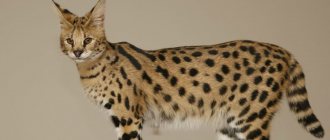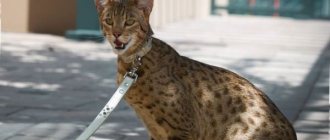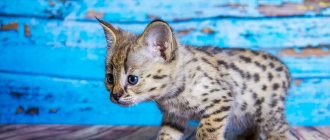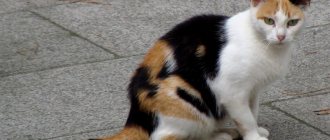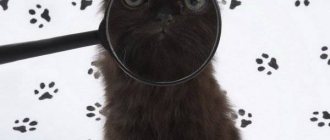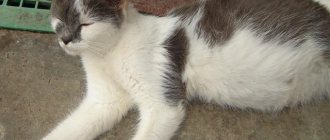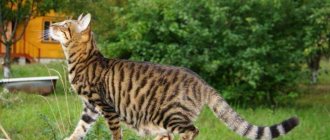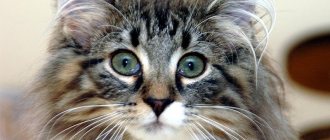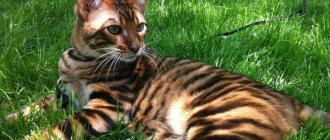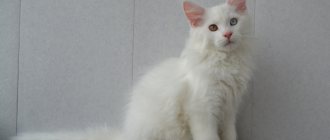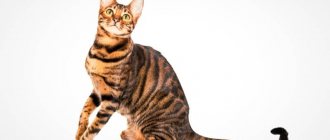The climatic region located in the subequatorial zone, with characteristic herbaceous vegetation and small patches of trees and shrubs, is called savanna.
African savannas occupy more than 40% of the continent's area. They are distinguished by diverse fauna and flora. Moreover, according to scientists, this is one of the most environmentally friendly regions of the planet.
Savannah vegetation of Africa
To survive, savannah trees acquired certain specific properties that protect them from drought and heat. The most striking representative of the savanna flora is the baobab. The diameter of its trunk often reaches 8 meters. This giant grows up to 25 meters in height.
The thick baobab trunk and bark are capable of accumulating moisture like a sponge. Long and powerful roots absorb moisture from deep in the soil. Africans learned to use baobab shoots and leaves for food, and to make various tools from the bark.
Despite not the most favorable conditions, the flora of the savannah (Africa and other continents) is quite diverse. Here you can find plants that are better adapted than others to drought, which lasts for more than one month.
Amazing plants
The main characteristic of savannas is long dry months followed by periods of rain. It is this parameter that determines the life of plants in this strip. Most of them are perfectly adapted to frequent fires and can recover in a short time.
Millennial Elders
One of the main symbols of the savanna are amazing trees - baobabs. Establishing the age of the oldest specimens is difficult because these trees do not have annual rings, so it is not possible to establish their age using the standard method. According to general estimates by scientists, baobabs can live about a thousand years, but radiocarbon dating gives different figures - 4500 years. During their lifetime, they manage to grow a huge spreading crown. In the winter they shed their leaves, but not from the cold, but from drought.
The baobab blossom is an amazing sight. The process continues for several months, but each flower lives only one night, so it will not be possible to see a blooming baobab during the day. Since most insects sleep at night, these flowers are pollinated not by them, but by bats that live here.
The baobab has another amazing property that is rarely found among trees: after cutting down the main trunk, the baobab is able to take new roots and take root again. Often, trees that have been knocked down by a storm survive in this way and remain in a lying position forever.
Bleeding Dragons
Previously, the natives considered dragon trees to be enchanted monsters. The reason for this was the amazing property of dracaena: when its bark was scratched or cut with a knife, red resinous juice began to ooze, reminiscent of blood. The name “dracaena” itself translates as “female dragon”.
Previously, the resinous liquid was used for embalming, but now this juice is used on an industrial scale for the preparation of the production of red pigments, paints and varnishes. Dracaena has also found application in medicine and cosmetology: it is used as a component for the treatment of gastric diseases and skin problems.
The dragon tree grows very slowly, but over the decades some representatives reach enormous sizes. The amazing “umbrella” shape of the crown is formed only after flowering, and before that the dracaena grows with a single trunk. The foliage is very densely located in the crown, so at the foot of the dracaenas, people and animals tired of the heat often find rest in complete shade. From its natural habitat, the plant has spread throughout the world as a houseplant because it is very low maintenance but looks attractive and exotic.
elephant grass
Savannah is filled primarily with pampas grasses. But among them there are absolutely amazing representatives. This includes elephant grass. This plant can reach a height of 3 meters, creating barriers for large animals, and for small animals it serves as a reliable shelter and home.
Elephant grass grows near shallow bodies of water. When they dry out, it can die en masse from lack of moisture, blocking the flow of streams or small rivers. It is also afraid of cool weather, so the ground part dies off immediately with the first cold snap. The root system of this cereal penetrates very far into the soil, sending roots to a depth of 4.5 meters, where it draws water. After droughts, with the arrival of the first rains, it quickly grows again and serves as food for many animals: zebras, antelopes, giraffes and other herbivores.
People do not ignore it either, using elephant grass to prepare some dishes, using it in construction and growing it as an ornamental plant.
The savannas of the world keep many secrets. A traveler who decides to visit these lands will find many amazing discoveries that will allow him to understand the romance of safari and appreciate this harsh but attractive world.
sausage tree
Very unusual (for a European) is the sausage tree growing in these places. It got its name thanks to the unusual fruits that grow up to 50 cm in length. According to local residents, they are used in the treatment of rheumatism and syphilis. In addition, it is a mandatory attribute in rituals to expel evil spirits.
Looking at a photo of the African savannah, you will notice that there are many different palm trees in these areas. And indeed it is. There are several types of similar trees here.
In addition, the flora is rich in thorny bushes and mimosas - a favorite delicacy of giraffes.
It should be noted that during a period of drought in the savanna, all vegetation seems to freeze: often during this period, trees completely shed their leaves, and the grass sometimes completely burns out under the hot sun. There are frequent fires here, which damage the vegetation.
But when the rainy season comes, the nature of Africa comes to life again. Fresh, lush grass appears and various plants bloom.
Animals of Africa (savannah)
The vast expanses of the savannah are home to many representatives of the fauna that came to these regions due to migration phenomena, which are primarily associated with changes in climatic conditions on Earth.
Millions of years ago, Africa was covered with rain forests, but gradually the climate became drier, and therefore huge areas of the forest disappeared forever. Their place was taken by open forests and fields overgrown with herbaceous vegetation. In turn, this contributed to the emergence of new animals that were looking for favorable conditions for life. According to scientists, giraffes were the first to come from the jungle, followed by elephants, antelopes of various species, monkeys and other herbivores. It is quite natural that predators - servals, cheetahs, lions, jackals and others - followed them into the savannah.
Amazing animals
In conditions of lack of moisture and food, animals need to show great endurance and be able to overcome vast territories in order to get food. Savannah is an ideal place for predators, as the short grass makes it possible to look around and see where prey is hiding. However, there are also interesting representatives of the fauna that feed on plant foods.
The largest animal
It is in the savanna that the largest land animal on Earth lives - the African savannah elephant. Its average weight is 5 tons, but in 1956 the largest representative weighing 11 tons was recorded! The face has huge curved tusks that are formed from the front teeth. Their weight is on average 100 kg. Tusks have always been highly valued by humans, so the elephant population was mercilessly destroyed, and this process has not stopped even now.
Elephants are social animals. It is believed that their herds are the most united in the entire fauna kingdom. They take great care of sick or injured family members, help them eat and support them if their weak relatives find it difficult to stand.
There is an opinion that only elephants from the entire animal world have a burial ritual. Realizing that their brother is dead, they cover him from above with branches and earth. It is surprising that they “bury” in this way not only representatives of their own family, but also unfamiliar elephants from other families, and even people. Similar and other, no less interesting facts about the life and death of these animals are described in detail in the book “Among the Animals of Africa” by the famous zoologist and naturalist writer Bernard Grzimek.
Another trait that is similar to humans is the love of sex. These African inhabitants have sex all year round, although they are only capable of fertilization for a few days during the rainy season. Males show courtship so that the female will be favorable to them. Pregnancy in elephants is the longest on earth and lasts almost 2 years - 22 months. Elephants sense the approach of labor and can speed it up by eating a special type of grass that causes contractions.
Cubs are born blind, so they funnyly hold on to their mother's tail so as not to get lost.
Creeping fear
The black mamba is colored brownish-gray, which makes you wonder about its name. In fact, the word “black” did not arise by chance: this color can be seen on the inner surface of the mouth when the snake rushes at a person to bite him. This amazing representative of reptiles reaches impressive sizes, growing up to 4 meters, and it can move at a speed exceeding the running speed of many people - 20 km/h.
There are not many snakes in the world with such strong poison: after a bite, a black mamba crawls some distance and waits for the poison to paralyze the victim. Previously, after being bitten by this snake, people could not escape and died in agony, but now a special antidote has been developed that can prevent death. The only difficulty is that the serum must be administered within the first minutes after the bite, otherwise it will not save the bitten person.
The hunting skills of these snakes are evident from birth: already half an hour after the babies hatch from the eggs, they are able to attack the prey and inject deadly poison into it.
Unlike other mamba species, this species does not live in trees. However, she found a less exotic home for herself in the form of empty termite mounds.
Master of the Savannah
The first picture that comes to mind when thinking about the savannah is the graceful king of animals - a lion, resting after a hunt. This predator is quite lazy: it will never make an extra movement if it is not already hungry.
During the mating season, the female and male leave the pride and indulge in lovemaking for a week. During this entire period they do not hunt and starve, losing a lot of weight. At the same time, their copulation occurs every 15–20 minutes. Sometimes the number of matings reaches 100 times a day. After the love period ends, lions regain their weight for a long time.
These cats sleep a surprising amount: 20 hours a day, just like domestic cats. In a good mood, they can purr and bask in the sun, but when the lion gets angry, he lets out a roar that can be heard for 10 km in the area. Only with the help of a roar can he scare away animals that pose a danger to females or cubs.
Most often, lions hunt at night. This is caused by very acute night vision, which is almost as good as daylight vision. Since most prey do not have universal vision, the chances of success in a lion's night hunt are greatly increased.
Highest
Savannah has become home to many record holders. These include giraffes - the tallest animals on the planet. Their height ranges from 4.6 to 6 meters, most of which is at the neck.
Female giraffes often set up kindergartens, in which several adults look after the babies, while the rest go for food at this time. After the first ones have eaten, they replace the hungry “nannies”.
Giraffes sleep only 60 minutes a day, sometimes they can do this while standing. Despite such a short duration of sleep, the spotted inhabitants of the savannah never yawn: they are the only animals that cannot do this.
Proud bird
The ostrich is not able to fly due to its impressive weight, but it runs so fast that it is slightly inferior to the flight of some birds. At a speed of 70 km/h, he shows amazing mobility: if desired, he can suddenly change the direction of running, without slowing down or slowing down at all.
It is this species that holds the record for egg size: a one and a half kilogram ostrich egg could easily fit 2.5 dozen chicken eggs. The male builds the nest, and all the females he has fertilized lay eggs there. During the day they sit on the nest, and at night a caring dad takes over the baton and warms the eggs with his body.
When the chicks are in danger, ostriches can be cunning and show amazing acting skills, portraying a wounded and weak creature, leading the predator away from the babies. At this time, children quickly run to one of the adults and hide their heads under a large wing. Then the ostrich leaves the amazed predator and returns to his herd.
Quirky set
The Cape aardvark is puzzling with its appearance: it feels like the body parts of different animals were combined in it. Its body resembles an anteater, its long ears resemble a rabbit, its snout is borrowed from piglets, and its tail comes from a kangaroo.
This amazing animal has such an original shape of its nose in order to eat termites, which it hunts at night. He has an excellent sense of smell, thanks to which the aardvark accurately finds termite mounds and devastates them. During the night he can travel about 50 km in search of tasty insects. Termites are not scary for the aardvark, since its skin is so thick that insects are not able to bite through it. They stick to the sticky tongue and go straight to the stomach.
The body size of the aardvark is quite impressive: it can grow up to 2.3 m. If it is driven by a natural enemy, it shows enormous strength with which it can slash the enemy with its claws, fights with its hind legs and very quickly tumbles forward.
Giraffes
Photos of the African savanna that we see in textbooks and advertising brochures of travel companies always show us one of the typical representatives of the fauna of these places - giraffes. Once the number of these animals was very large, but they were the first to suffer from the white colonists - their skins were used to make coverings for carts. Now giraffes are protected, but their numbers are small.
History of the origin of the Savannah cat breed
The idea of breeding an easygoing domestic cat, similar to its wild relatives, has not left the minds of breeders and breeders for a long time. But only in the 80s of the 20th century this was realized in practice. The story began on one of the cat farms in the USA, whose owner was Judy Frank. A breeder asked Susie Wood for an African Serval cat to mate with one of her Siamese cats.
The birth date of the first Savannah cats is considered to be April 7, 1986. It was on this day that two large (weighing approximately 300 g each) long-legged kittens with a spotted color were born. Judy Frank gave the female as a token of gratitude to the owner of the serval. It was this cat that later became the starting point for the expansion of the Savannah breed.
Three years after crossing with an Angora cat, the newly-born cat gave birth to kittens similar to itself. After the appearance of the second generation of pets, Susie Wood published several articles about Savannah big cats and made an application for a new breed.
At this time, breeder Patrick Kelly, together with breeder Joy Sroufe, decided to purchase one of the pets and start improving the cat line. They developed the basics of the Savannah cat breed standard, which was submitted to the Board of Directors of the International Cat Association in 1996.
In 2001, the Savannah standard was approved and the breed was officially recognized by all major felinological organizations. From this time on, to maintain purity, Savannah were crossed either with each other or with Servals.
Elephants
They are the largest land animals in Africa. It is impossible to imagine savannahs without huge steppe elephants. They differ from their forest counterparts in their powerful tusks and wider ears. By the beginning of the 21st century, the number of elephants had greatly decreased, but thanks to conservation measures and the creation of reserves, there are more elephants today than in the last century.
Hyenas
For a long time it was believed that this was a cowardly, sedentary animal that did not hunt on its own and was content only with the leftovers of the lions’ meal. As modern scientists have found out, this is far from true. Hyenas hunt at night and can easily kill even large animals such as zebra or antelope. And, what is most surprising, it is lions who “parasitize” hyenas more often, and not vice versa. Hearing their voices, the “kings of nature” rush to this place and drive the hyenas away from their prey. More recently, it became known that hyenas attack people and can be very dangerous.
Birds
There are many insects and worms in the grass and soil, so the fauna of the savannah is distinguished by a large number of bird representatives. They flock here from all over the world. The most common species are storks, red-billed quilles, vultures, marabou, African ostriches, vultures, horned crows, etc. The savannas are home to the largest and, perhaps, one of the most beautiful birds in the world - ostriches.
The picture of the animal world of the African continent would be incomplete if we did not mention termites. There are dozens of species of these insects. Their buildings are a characteristic element of the savannah landscape.
It should be noted that animals are highly revered in Africa. It is not without reason that their images can be seen on the coats of arms of many African states: a lion - Congo and Kenya, a zebra - Botswana, an elephant - Cote d'Ivoire.
The fauna of the African savannah has developed over the centuries as an independent whole. The degree of adaptation of animals to specific conditions is unusually high. This includes a strict division according to the method of nutrition and the composition of feed. Some use shoots of young shrubs, others use bark, and others use buds and buds of plants. In addition, different animals take the same shoots from different heights.
Description of the Savannah cat
A special distinguishing feature of Savannah cats is their striking resemblance to the wild African serval and cheetah. The royal appearance, wild grace and sharp mind make this breed so desirable by true connoisseurs that they are not afraid even of the need to part with considerable financial savings. Savannahs are very mobile and active cats. It is necessary to take into account their temperament and some features of the content. Savannahs require a lot of free space, they love to run, jump and swim well. The height of their jump reaches three meters! They need to be walked for a long time and bathed in nearby bodies of water. And when compiling a diet, it is worth taking into account their wild origin.
The slender long neck gives the cat a special appearance
Character
Savannahs are playful, active, intelligent and very curious cats. They easily open room doors and cabinet drawers. In addition to the fact that their temperament is far from phlegmatic, they like to “stick their noses everywhere” and are quite stubborn. If a cat has something in mind, then it will certainly carry it out, it’s just a matter of time. Generations F1 and F2 do not show aggression, but it is still not recommended to have them in a house where there are small children. Suddenly their closest relative, the predator, awakens in them. The full personality and character of the savannah will be formed only by the age of three. And it may happen that a cute and affectionate kitten will show some new qualities by the age of three. Subsequent generations of savannahs (F3, F4 and beyond) show more character traits and behavior of domestic cats.
Savannah chooses one or two family members as her friends. The cat simply doesn’t notice the rest. She loves to “butt” and touch the owner with her paw, this is how she expresses her trust and joy from the meeting. An independent savannah may allow herself to be stroked and will even purr with pleasure, but only if she wants it herself, if you try to force her, the cat will immediately defiantly and proudly leave. The affectionate kitty can also hiss seriously, but this is not because of aggression, but simply out of a desire to communicate. A talkative cat makes different sounds, not always similar to ordinary meowing.
The cat plays with pleasure, following the command “fetch”
Some of the Savannah's character traits are reminiscent of dogs: they are loyal, greet guests or visiting owners in the hallway, play with pleasure and fetch objects, walk well on a leash, and love to go for a ride in a car. They are easy to train and follow certain commands.
A well-mannered cat happily walks on a leash, causing admiring glances from passers-by
If there are other animals in the house, then savannahs will get along well with them, however, in this “pack” they will take the place of the leader. They are friends with dogs, apparently, due to some similarity in character, and it is Savannah dogs that are preferred in communication. With their irrepressible energy, they tire other pets, constantly involving them in their games and entertainment. They love to move around the “upper tier” of rooms, throw objects from above and watch the results. The owners do not always like this, and a scolded cat may be offended for a long time and not suitable for communication.
Despite their activity and sociability, they calmly endure their loneliness and patiently wait for a long time for the arrival of their owners.
Considering the curiosity of savannahs, poisonous plants should be removed from the premises: violets, dieffenbachias, monstera and other plants that can harm the cat if it tastes it. Electrical appliances should also not be left plugged into sockets.
Savannah easily climbs tall cabinets and loves to travel around the upper tier of rooms.
Appearance
The appearance of this breed is very different from the usual standards of domestic breed cats, not only in character.
The savannah's coat has a "cheetah" coloration, the hairs are quite stiff, the undercoat is soft and thick, and the body covering is uniform. The spots can be scattered throughout the body and be of different sizes, but should only be colored black or dark brown. Coat color is influenced by the breed genes of the parent domestic cat. Savannah can be tabby cinnamon (cinnamon), chocolate, brown, gold or silver. White spots or spots of a color other than brown and black, and a “brindle” pattern are signs of disqualification according to the breed standard.
Savannahs reach full maturity by three years. The size of the cat is much larger than usual: hybrids can reach up to 60 cm at the withers. The weight of an adult cat is from 7 to 15 kg. Accordingly, the higher the generation index, the lower the weight and height will be. Such hybrids live 15–20 years.
Outwardly, the graceful savannas look more like a serval than a cat. A small triangular head on a long slender neck gives her a royal posture. The large, close-set, rounded ears are covered inside with short hair. There are wild spots on the back of the ears, which indicates the purity of the breed. The nose is quite wide. The nose is slightly convex, black, red or pink.
Unusual Savannah eyes have different upper and lower eyelid lines
The Savannah has special eyes: the upper eyelid has the shape of a boomerang, and the line of the lower eyelid is almond-shaped. This feature will help you easily distinguish a serval hybrid from a Bengal or other cat. Eye color does not depend on coat color and can be yellow, copper or green. The distance between the eyes is equal to the size of the eye. The inside of the eye is outlined by a bright black line, reminiscent of a tear track.
Whitened spots on the back of the Savannah's ears indicate the purity of the breed.
Body length can be up to 135 cm. Powerful chest, muscular shoulders, strong and long athletic legs. The hind limbs are noticeably longer than the front ones, which allows them to easily jump 2.5–3 meters from a standing position. The paws are small oval with elongated phalanges, the color of the pads is only black or dark brown. The tail is of medium length and thickness and is usually brightly colored. For a standing animal, it is 10–12 cm short of the ground.
Due to its non-standard size, the Savannah is listed in the Guinness Book of Records as the largest domestic cat.
Health
Thanks to “wild” genes, the beauties of the savannah have excellent health. This artificially bred breed has no genetic diseases. And all she needs is timely vaccinations, treatment for helminths, quality nutrition and standard care. Under good conditions, cats of this breed live up to 20 years.
